| True leeches are placed in the infraclass Euhirudinea. Sanguivorous (blood sucking) leeches are ectoparasites and have historically been used for their medicinal properties and have recently been used again. Leeches can be used to treat a variety of circulatory diseases and for reconstructive plastic surgery. In particular, salivary extracts such as hyaluronidase (spreading factor) and hirudin, hementin, hemenerin and destabilase (anticoagulants) have been extracted and synthesised. |
| Descriptive Features: anterior (oral) and posterior (caudal) suckers present
anterior sucker contains mouth, smaller than posterior sucker
posterior sucker generally wider than body at point of attachment
body consists of 34 segments
no chaetae present
body not divisible into distinct regions
legs absent
lateral projections or 'gills' can be found in some Ozobranchidae genera
sensory structures present - eyes, oculiform spots, papillae and sensilla
in jawed leeches (Hirudinidae, Haemadipsidae), buccal cavity contains 2 or 3 muscular jaws bearing teeth or a cutting edge
in jawless forms (Erpobdellidae), buccal cavity may contain 3 muscular ridges, in some genera these ridges may bear small tooth-like stylets
Total length: up to 80 mm (extended) |
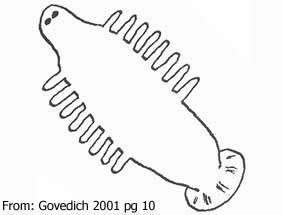
|
|
| |
| Taxonomic Checklist: Orders
Arhynchobdellida (jawed and jawless)
Rhynchobdellida (leeches with a proboscis)
|
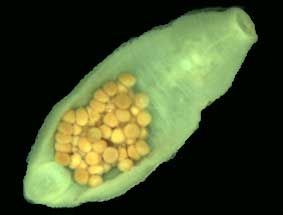
|
|
| |
Distribution: Australia wide
Sensitivity Rating: SIGNAL grade 1. Leeches can tolerate a broad range of salinities, temperatures, and oxygen concentrations.
Functional Feeding Group: predators
|
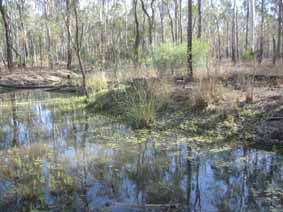
|
|
Ecology: Leeches occur in both lentic and lotic waters as a part of the benthic community on muddy or silty substrata. Predacious leeches are found attached to submerged objects including stones and aquatic vegetation. They are nocturnal and often cryptically coloured. Whilst most predacious leeches wait for prey to pass by, some Glossiphoniidae and Erpobdellidae species actively seek prey using chemo- or mechano-reception. They feed on chironomids, oligochaetes, amphipods, and molluscs. Sanguivorous leeches, i.e. some species of Glossiphoniidae, Hirudinidae and Haemadipsidae, are temporary ectoparasites feeding on the blood of fish, turtles, crocodiles, amphibians, waterfowl and mammals. Most are not host specific. Predacious leeches secrete digestive enzymes used to break down the fluids and tissues of their prey. However, sanguivorous leeches secrete compounds to aide bloodsucking rather than digestion. These include mucus for lubrication of the mouthparts, hyaluronidase (spreading factor) to increase the permeability of mammalian skin, vasodilation (histamine-like secretion) to promote blood vessel dilation, anticoagulants to prevent blood clots and possibly an anaesthetic-like compound.
Some freshwater species of Euhirudinea use a looping form of locomotion by elongating and shortening the body and alternating between using anterior and posterior suckers to attach to substrata. Most aquatic Euhirudinea are able to swim by flattening their body and using dorsoventral undulations of the body. Some species of Glossiphoniidae and Ozobranchidae can swim only as juveniles but not as adults.
Although leeches are hermaphrodites, they cross fertilize. In Glossiphoniidae, sperm are transferred via spermatophores that are deposited near the clitellum. The sperm burrow through the body wall to the ovaries to effect fertilization. Eggs are held in a brood case attached to the midventral region of the adult. Juveniles stay attached to the adult for a period of time after hatching. In other families, sperm are introduced directly into the female system. After fertilization, a cocoon is secreted to enclose the eggs and buried in the substratum or attached to submerged rocks, logs or plants. |
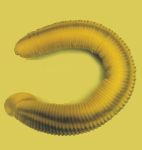
|
Arhynchobdellida |
|
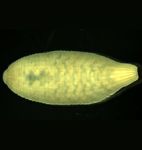
|
Rhynchobdellida |
|
|
| |
| Information Sources: Govedich 2001, Williams 1980, Hawking & Smith 1997, Govedich 2002 |
More ››› key to orders 
|
|